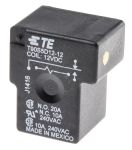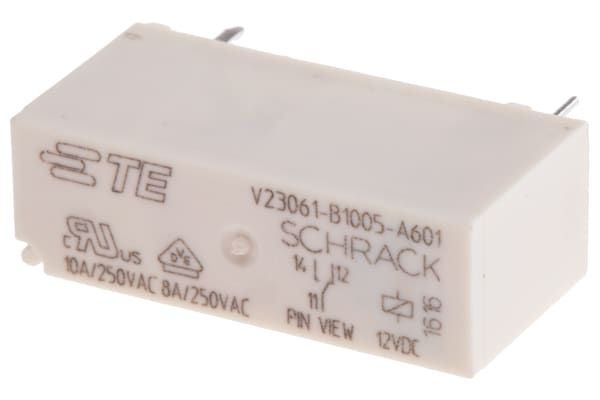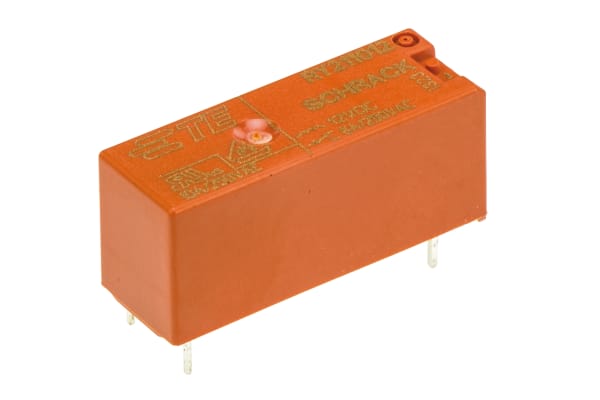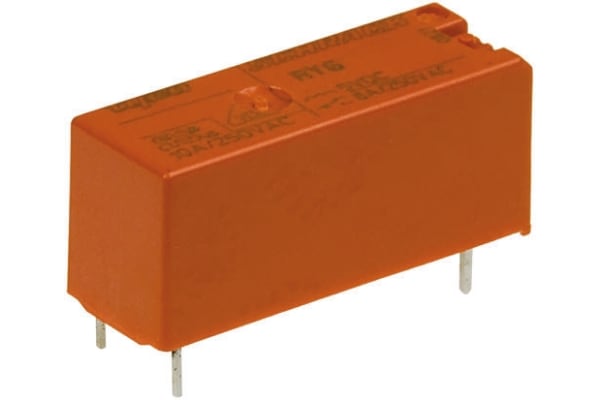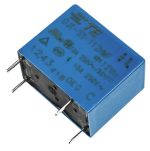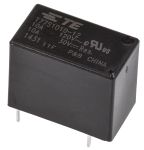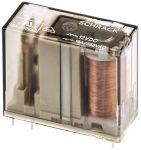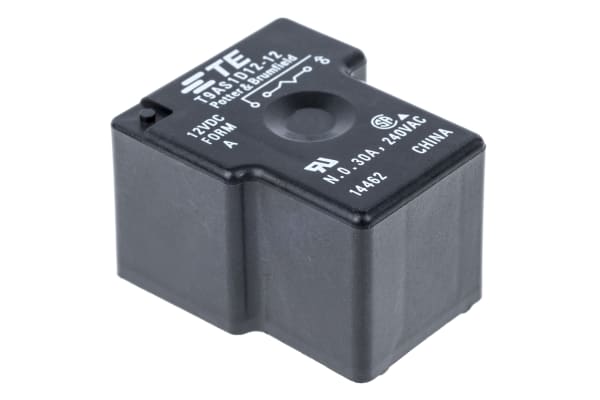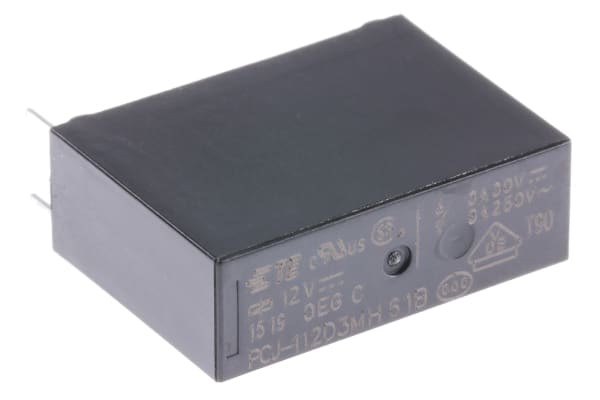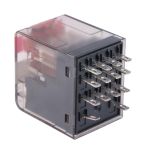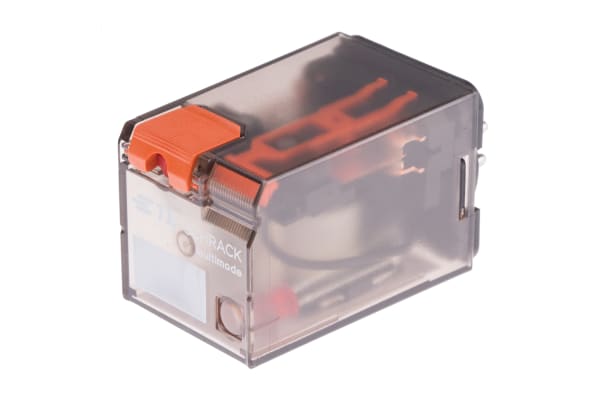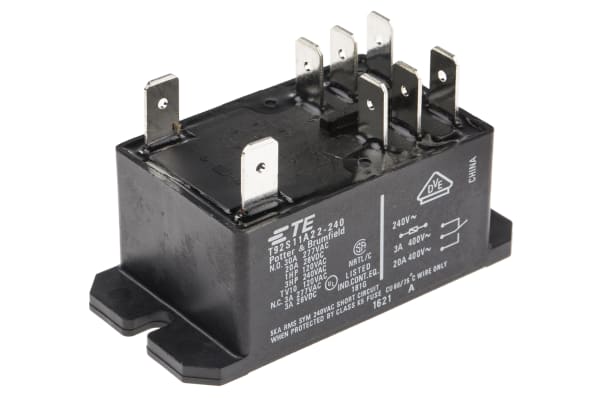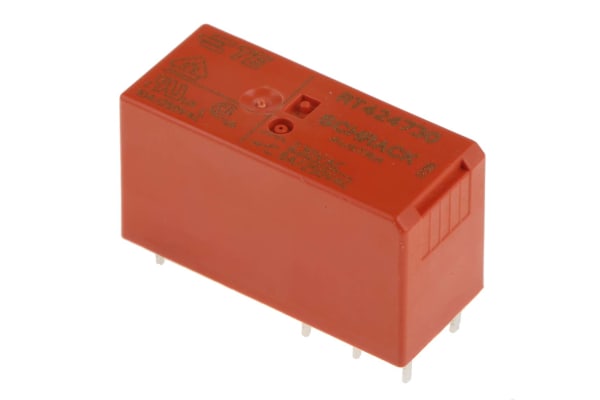Non-Latching Relays
Relays are electrical switches that are operated by electrical impulses with the primary function to open and close a circuit, they can also be referred to as industrial switches. There are 2 main types available, latching and non–latching relays.How do non-latching relays work?Non-latching relays are in a normally closed (NC) position and will stay in this state without power. When power passes through the circuit, the relay switched to a normally open (NO) position by using an internal coil to generate a magnetic force, holding this NO position. Once the current is turned off, it returns to the NC position. This makes non-latching relays well suited to push-button applications like keyboards and micro-controller input buttons.What are non-latching relays used for?Non-latching relays are highly durable and versatile components, making their performance long lasting and suitable for use in a wide range of applications, such as:Automotive enginesHousehold appliancesIndustrial machineryMedical equipmentTelecommunications equipmentWhat is the difference between latching and non-latching relays?Both types of relays in similar in design and function, however, a significant difference between them is that a latching relay will remain in the last position it when it was last powered, whereas a non-latching goes back to its normal position. This makes each more type of relay suitable for different applications. Considerations when selecting a relayWhen choosing a relay, it is important to consider a number of specifications to ensure it is fit for purpose, some factors include:Coil voltage – the required voltage to actuate the switching mechanism. If a voltage is too high this could damage the components, if it is too low then it will not actuate. Contact configuration – This is the state the contacts are in without power. For example SPST, single pole single throw.Contact material – the relay contacts are available in many materials that have certain properties. Common materials are gold, silver, tin oxide and nickel Coil power – the amount of power (watts) the coil operates at. This must match the power in the circuit for correct function. Coil resistance – the amount of resistance (ohms) in the circuit that the coil creates.
-
TE Connectivity, 12V dc Coil Non-Latching Relay SPDT, 16A Switching Current PCB Mount Single Pole, RTH14012
IDR61,885.10 -
TE Connectivity, 12V dc Coil Non-Latching Relay SPDT, 20A Switching Current PCB Mount Single Pole, T90S5D12-12
IDR191,948.70 -
TE Connectivity, 12V dc Coil Non-Latching Relay SPDT, 20A Switching Current PCB Mount Single Pole, T9AS5D12-12
IDR77,723.49 -
TE Connectivity, 12V dc Coil Non-Latching Relay SPDT, 5A Switching Current PCB Mount Single Pole, PE014012
IDR60,836.20 -
TE Connectivity, 12V dc Coil Non-Latching Relay SPDT, 6A Switching Current PCB Mount Single Pole, V23092A1012A301
IDR136,147.22 -
TE Connectivity, 12V dc Coil Non-Latching Relay SPDT, 8A Switching Current PCB Mount Single Pole,
IDR120,413.72 -
TE Connectivity, 12V dc Coil Non-Latching Relay SPDT, 8A Switching Current PCB Mount Single Pole, RY211012
IDR58,004.17 -
TE Connectivity, 12V dc Coil Non-Latching Relay SPDT, 8A Switching Current PCB Mount Single Pole, RY612012
IDR95,974.35 -
TE Connectivity, 12V dc Coil Non-Latching Relay SPNO, 10A Switching Current PCB Mount Single Pole, 112HMFF000
IDR129,014.70Bag (1 Bag of 5) -
TE Connectivity, 12V dc Coil Non-Latching Relay SPNO, 10A Switching Current PCB Mount Single Pole, OJE-SH-112HM,000
IDR141,181.94Pack (1 Pack of 5) -
TE Connectivity, 12V dc Coil Non-Latching Relay SPNO, 10A Switching Current PCB Mount Single Pole, T77S1D10-12
IDR38,494.63 -
TE Connectivity, 12V dc Coil Non-Latching Relay SPNO, 16A Switching Current PCB Mount Single Pole, 2-1440002-4
IDR44,788.03 -
TE Connectivity, 12V dc Coil Non-Latching Relay SPNO, 16A Switching Current PCB Mount Single Pole, RP3SL012
IDR249,323.53 -
TE Connectivity, 12V dc Coil Non-Latching Relay SPNO, 16A Switching Current PCB Mount Single Pole, RT334012
IDR44,892.92 -
TE Connectivity, 12V dc Coil Non-Latching Relay SPNO, 30A Switching Current Flange Mount Single Pole, T9AP1D52-12
IDR94,610.78 -
TE Connectivity, 12V dc Coil Non-Latching Relay SPNO, 30A Switching Current PCB Mount Single Pole, T9AS1D12-12
IDR74,576.79 -
TE Connectivity, 12V dc Coil Non-Latching Relay SPNO, 3A Switching Current PCB Mount Single Pole, PCJ-112D3MH,301
IDR26,117.61 -
TE Connectivity, 12V dc Coil Non-Latching Relay SPNO, 5A Switching Current PCB Mount Single Pole, PCJ-112D3M-WG,000M
IDR38,075.07 -
TE Connectivity, 230V ac Coil Non-Latching Relay 4PDT, 6A Switching Current PCB Mount, 4 Pole, PT570730 9-1419111-1
IDR171,075.59 -
-28.50%
TE Connectivity, 230V ac Coil Non-Latching Relay 4PDT, 6A Switching Current PCB Mount, 4 Pole, PT570T30 8-1415001-1
IDR194,675.84IDR141,706.39 -
TE Connectivity, 230V ac Coil Non-Latching Relay DPDT, 10A Switching Current Plug In, 2 Pole, MT228230 7-1393090-1
IDR362,185.17 -
TE Connectivity, 230V ac Coil Non-Latching Relay DPDT, 12A Switching Current DIN Rail, 2 Pole, PT2S7TD0 6-1415074-1
IDR462,774.68 -
TE Connectivity, 230V ac Coil Non-Latching Relay DPDT, 30A Switching Current Panel Mount, 2 Pole, T92S11A22-240
IDR396,484.20 -
TE Connectivity, 230V ac Coil Non-Latching Relay DPDT, 8A Switching Current PCB Mount, 2 Pole, RT424730 7-1393243-9
IDR140,657.49




